When IKEA wanted to break into the UK and Ireland markets, they faced the challenge of creating a mix of global and local content to drive sales. The furniture brand nudged its local customers to share pictures of their products at IKEA at Mine, a platform dedicated to user-generated content (UGC).
This emphasis on UGC marketing increased IKEA’s engagement rate by 2.7X, the conversion rate by 3.54x, and social media reach by 27%.
If you’re wondering what it takes to unlock this massive level of success using user-generated content, we’ll give you all the tips, best practices, and examples in this article. Stick with us till the end, and we’ll also tell you how working with influencers can ramp up your ROI.
What is user-generated content?
User-generated content is all the organic content your customers create for your brand. It can be a social media post, an email, a video, or other formats. Users post this brand-specific content organically to share their experience with your brand or participate in a community contest.
“People already consume user-generated content daily. A few examples: Product or company reviews, how-to’s demonstrating how to use a product, and shopping hauls with latest purchases.”
-Shama Hyder, CEO & Founder at Zen Media
Here’s a great example of UGC by Chubbies. The apparel brand has a popular hashtag, #chubbiesshorts, on Instagram to capture user-generated content in a single place. With close to 20,000 posts, this hashtag acts as a real-life, unfiltered catalog for the brand.
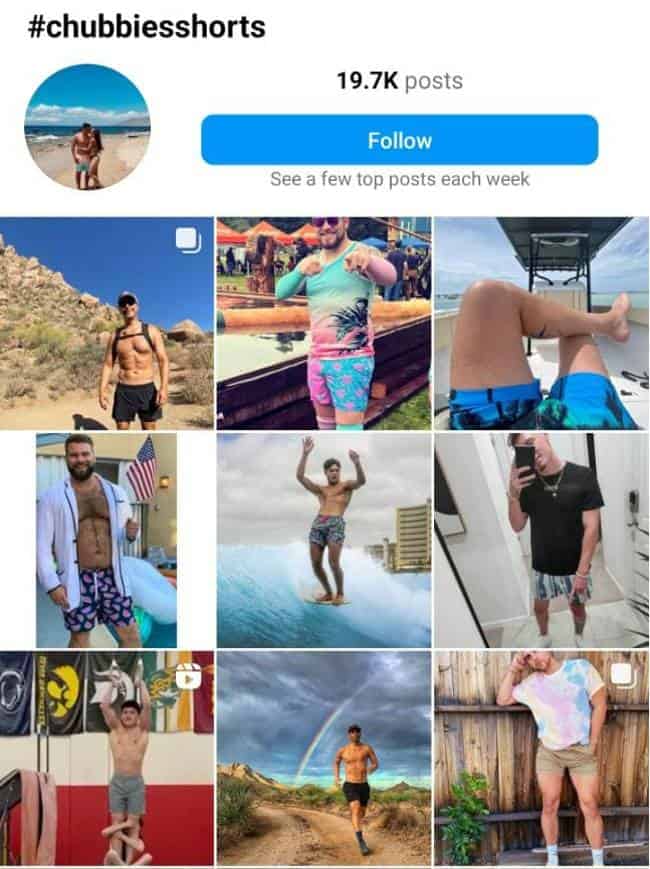
6 Undeniable benefits of creating UGC content
It’s no surprise that the ecommerce market is more competitive than ever, with marketing campaigns raising the bar every year. If you want to convince target buyers, win their trust, and hit your revenue goals, you must go beyond the mainstream marketing tactics. This is where UGC can turn the tables in your favor. It’s a customer-centric and cost-effective marketing technique with a good ROI.
“The mistake brands make on social media, especially when trying to create community, is focusing on being interesting without investing their interest in people. Sharing user-generated content is critical to success now.”
-Kurt Elster, Shopify Expert
Here are a few reasons you should invest in UGC to connect with your target buyers:
1. Creates an authentic brand image
Customers don’t want to buy from just another brand. Instead, they dig deep by searching on the internet or asking their friends for recommendations to weigh all their options and make a buying decision.
One key factor that outweighs all others in this pre-purchase research is authenticity, as 88% of people agree. To build an authentic brand image, you must go beyond the standard hard-selling ads and branded content. That’s where UGC comes into the picture.
User-generated content is unfiltered and unsponsored content shared by actual customers. It works as word-of-mouth marketing, showing interested buyers what they will get if they buy from you, thus building more authenticity for your brand.
Put simply, UGC connects actual and potential buyers to make a case for you and create a positive reputation.
2. Builds social proof for the brand
Starting an ecommerce store is not enough. You need to win your customers’ trust and create social proof that your products are worth the price.
As opposed to the planned and polished branded content flooding your social media feeds, UGC brings real experiences to the table. It includes organic insights and opinions from your happy customers. This content nudges potential buyers to trust you over other brands and buy from you. After all, 91% of shoppers rely on customer reviews to finalize purchases.
3. Accelerates buying decisions
User-generated content creates a positive sentiment around your brand. It wins people’s trust, influences them positively, and pushes them down the sales funnel toward a purchase. Not just that, but it also builds enough confidence in interested buyers to speed up these buying decisions.
For example, if a customer posts a glowing review of your products on Instagram, their friends and acquaintances looking to buy something similar will be more inclined to place their order with you.
This explains why 90% of US shoppers consider UGC a decisive factor in their purchase decisions—it assures them that they’re making the right decision.
4. Wins customer loyalty and trust
UGC is not just about driving sales; it’s equally about creating a community of loyal customers. Sharing brand-specific content allows your buyers to be a part of your brand’s growth instead of just being a sales figure. It deepens engagement and solidifies their relationship with your brand.
This brand affinity results in long-term loyalty and trust. In essence, UGC shows customers they matter and makes them brand advocates.
5. Aligns with social commerce
UGC builds a stronger case for social commerce—shopping directly from social media platforms.
You can integrate your social store with UGC marketing. So, when users see a customer’s post about your brand, they can instantly jump to the relevant products in the post, read its specifications, and check out to finish their purchase.
UGC simplifies social commerce for brands and customers alike. Brands don’t have to push their products through ads to get more sales. On the flip side, customers can see your products in real life, decide to buy a product, and buy it in a few clicks without ever leaving the app.
6. Increases organic reach
With so much marketing noise and clutter, reaching the right people is no cakewalk. Good quality and positive reviews are not enough to put you in front of your target audience. You need that extra boost of visibility to reach untapped markets and meet buyers where they are and convert them.
UGC enables brand discovery and enhances your reach to bring more buyers into the funnel. It’s a proven way to increase audience engagement, leading to more shares and visibility across social media.
7 User-generated content examples that work (and why)
Building your user-generated content strategy from scratch can be challenging. The best way to learn what would work for your brand is to analyze what other brands are doing and why their UGC strategy is a hit.
We’ve done the legwork to give you seven great examples of user-generated content and why these campaigns work.
1. KeepCup
KeepCup sells reusable cups and bottles. The mission-driven brand has a great community of buyers on Instagram, creating UGC with the hashtag #keepcupbrew. The hashtag has over 4000 posts in different formats, spotlighting different KeepCup products and sharing reviews.
With over 170k followers on Instagram, the brand effectively uses this platform to engage with its existing customers and attract new ones. Besides this hashtag, you’ll also find user-generated posts on their main IG feed.
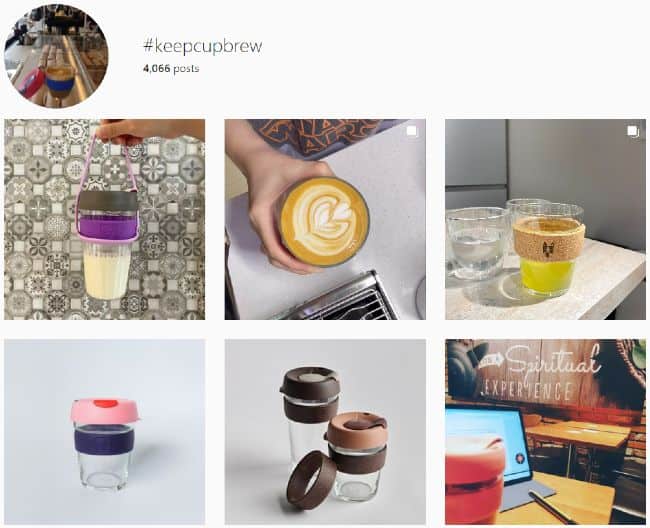
2. One Kings Lane
One Kings Lane is a furniture brand with its own hashtag, #myOKLstyle, to bring all its UGC content to a single place on Instagram. The brand has a massive network of nearly 900k followers on IG with over 200k user-generated posts on their hashtag.
These posts make it easy for any interested buyer to look at the brand’s catalog in real life and make a purchase decision. Since buying furniture is a significant investment, people can also get added assurance about the quality and look of OKL’s products.

3. d’you
d’you is a skincare brand with a solid UGC marketing strategy for Instagram. They actively post user-generated content in their main IG feed. Most of these posts include product reviews and advice on how to best use d’you’s products.
This way, the brand can create enough social proof to convert potential buyers. They can also educate their audience on the best ways to use their products to see visible results quickly.

4. Benefit Cosmetics
Benefit Cosmetics strategically uses its million followers on Twitter to produce and promote UGC content. The beauty brand frequently shares and retweets user-generated posts to show how customers love their products.
Their strategy helps engage its existing customers because they feel validated when the official account retweets its content. What’s more, it convinces potential buyers to buy from Benefit Cosmetics because so many people are already sharing great reviews for them.
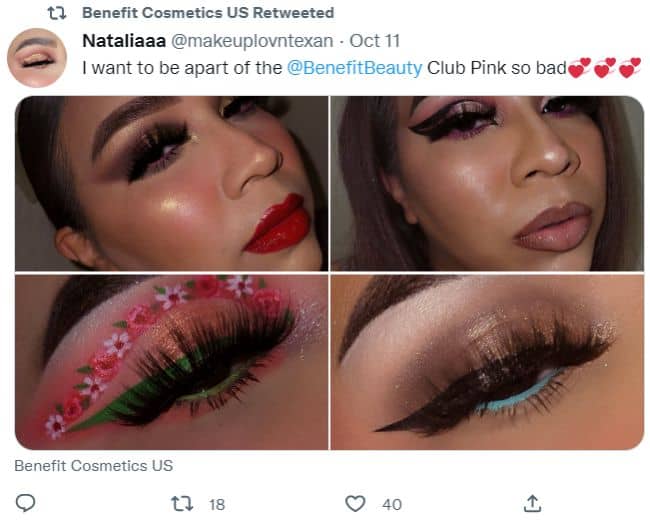
5. Tecovas
Tecovas is an up-and-coming footwear brand with a sizeable network on Twitter. They frequently retweet their customers’ content to pepper their Twitter feed with UGC content.
This tactic creates a positive reputation because interested buyers can see what these boots look like in real life. These user reviews also convey that the customers are happy with the product’s quality and style.
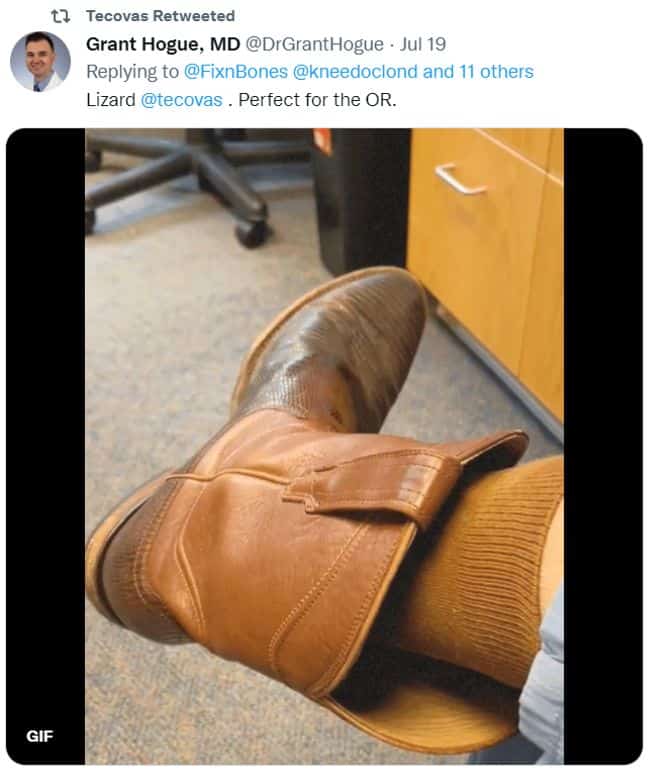
6. Supergoop!
Supergoop! is a skincare brand selling sun protection products. Their UGC strategy is an excellent example of building social proof and creating buyer interest through high-quality user-generated content on TikTok.
Most of Supergoop!’s UGC videos show how to use their products. These videos also reiterate the brand’s key value proposition of caring for your skin correctly.
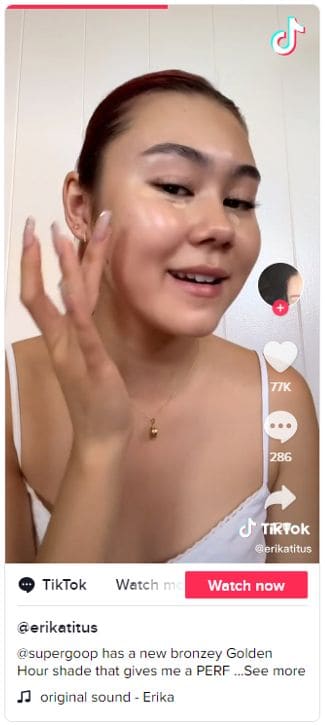
7. Jones Road Beauty
Jones Road Beauty differentiates itself in an oversaturated beauty market with a kick-ass UGC strategy for TikTok. The brand uses a mix of paid and organic marketing tactics on TikTok to produce a massive pool of UGC content.
Their aggressive UGC marketing efforts on TikTok ensured that 34% of their yearly revenue came from the platform. They specifically showcased women in their 50s on their TikTok page to garner a lot of buzzes and build a strong community of users creating brand-specific content organically.
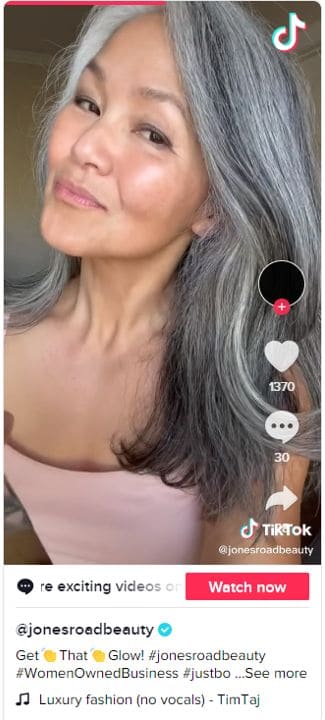
How to create user-generated content: 5-step guide
UGC content is a double-edged sword—if you don’t have a solid strategy to guide your user-generated content campaigns, it can easily backfire and harm your brand. Thankfully, drawing out a user-generated content strategy is easy with our 5-step process.
Let’s break down all the steps to get you started:
1. Define strategic goals for UGC campaigns
First things first, start with your goals behind the UGC campaign. Answer why you’re creating UGC content and define your campaign purpose before you get cracking.
Your goals can be anything, including but not limited to:
- Building brand awareness
- Breaking into a new market
- Improving customer trust
- Ramping up engagement
- Driving more sales
Setting strategic goals will clarify what you want from customers. It’ll also help finalize the right platforms, choose the ideal content formats, and pick the best ideas for your campaign.
2. Decide platforms to create high impact
Once you’re clear on why you’re running a UGC campaign, focus on selecting the right platforms to hit these goals.
Every avenue offers a unique value for your goals. For example, posting UGC content on your website can improve your traffic and conversion rates, while putting the same content on social media can increase discoverability and engagement.
When shortlisting the ideal platforms for your UGC campaign, remember to factor in your customer preferences too. Check where they hang out the most and would be interested in sharing brand-specific content.
Broaden the focus of your UGC strategy to look at the following:
- Your campaign objectives
- Your social media strategy
- Your audience preferences
Use these insights to pick platforms with the most promising ROI. After finalizing the right channels, strategize for what works best on these platforms and revisit your audience preferences to create high-impact campaigns with content that resonates with your target buyers.
3. Learn more about your audience preferences
Your customers lie at the core of your user-generated content strategy. So, it’s crucial to understand their preferences and shape your campaigns accordingly.
Take a pulse of your audience by interacting with them through surveys, polls, and social media activity. Use these insights to choose the content format that works best for them. Here are a few formats to consider:
- Images
- Videos
- Livestreams
- Reviews
- Blogs
- Emails
- Podcasts
- Case studies
Pick a mix of these formats to reach multiple buyer personas with varying preferences. Keep in mind the platforms you’ve shortlisted in step two to choose the content formats for your campaign.
For example, if you choose Twitter as your ideal platform, you can share images, videos, and links to other content formats. However, if you pick Instagram, videos would perform much better than most other formats.
4. Create clear guidelines for the type of content you want
Now that you’ve established your goals and selected the best platforms, you’re all set to roll out the campaign to the end users. But without clear guidelines on what type of UGC content you want, the results might be disappointing.
More than 50% of brands tell customers precisely what kind of content they want. So, instead of leaving it all on your customers, give them some ground rules for their content. This will also make the results more consistent and impactful.
Guidelines can include specific details like your hashtags, main channels for posting, and accounts to tag.
5. Work with influencers to maximize reach and trust
Including influencers in your UGC strategy is an underrated tip to take these campaigns to the next level and maximize the ROI. Influencers address a wider audience and help you reach more people unaware of your brand. This way, you can get more traction for your campaign and skyrocket the results.
We’ll explore the best ways of working with influencers to double down on UGC marketing for your ecommerce brand.
Partner With Top Influencers & Creators
Afluencer is home to thousands of talented Influencers and Content Creators. From beauty to sports, we have the perfect Collab partner for your Brand.
FIND INFLUENCERS
Working with influencers and creators to produce UGC at scale
On the surface, influencer marketing, and UGC marketing seem like they’re on two different ends of the spectrum. But in reality, ecommerce brands can leverage influencers to accelerate their results from a UGC campaign.
Collaborating with influencers for user-generated content means you can target a broader audience, encourage more people to participate, and drive more conversions.
Take a look at these four best practices to work with influencers and creators for your UGC marketing campaigns:
1. Prioritize long-term partnerships over one-time projects
Brands can’t take the paid influencer marketing route to succeed at UGC. Instead, you need to build a meaningful partnership with a select few influencers who champion your brand. This shows how these influencers are genuinely invested in your brand and not vouching for it for the sake of a sponsorship.
Building such partnerships is also crucial to win users’ trust. Think about it—who would you trust more, an influencer vouching for a brand since the very start or an influencer randomly posting about a brand for the first time?
The bottom line: find brand-fit influencers and prioritize healthy influencer relationships over transactional projects to turn them into brand ambassadors.
2. Design a comprehensive brief for the influencers
Like any other influencer marketing project, a UGC campaign requires you to share a list of dos and don’ts with the influencers. Create a detailed brief to clarify your expectations.
Here are a few things to include in your briefs:
- Brand voice, tone, and purpose
- Preferred content formats and channels
- Products and core value propositions to spotlight
- Creative directions for shooting the content
- Content ownership rights and permissions
- Ways to reuse and promote their content
Add any details that will help influencers create laser-focused content to influence your existing customers. You can also include a breakdown of the review and approval workflow to keep them on the same page for the next steps.
3. Experiment with different post ideas for UGC campaigns
Give your influencers the creative freedom to test various ideas for your campaigns. Analyze these posts carefully to see what’s working and what’s not to make your strategy more airtight.
Here’s a list of ideas to experiment with for your UGC campaigns:
- Create hashtags and run contests: One of the more popular ideas on platforms like TikTok and Instagram, brands create custom hashtags to create a library of UGC content. Influencers can also start trending contests, encouraging more people to participate and increasing traction for your campaign.
- Produce brand reviews or testimonials: Influencers can also create review posts or videos highlighting the benefits of buying from your brand. These posts create solid social proof and get more customers to share their experiences.
- Do a how-to sequence about the product: Brands also go for how-to videos, educating customers about the best ways to use their products. Influencers become a trusted source for users to learn more about your brand.
- Make unboxing content: Another popular collaboration idea for UGC campaigns is unboxing videos. Influencers can tell viewers your primary value propositions while unboxing a hamper of products they’ve received.
Let your UGC creators and influencers take the reins of your campaign to experiment with their ideas and produce standout content to wow your audience.
4. Go beyond social sharing for UGC influencer content
When you think of UGC marketing, social media is the number one (and potentially the only) platform you’d think of. But collaborating with influencers means you can cross-promote your UGC content in many channels, like:
- Ads: Convert the best-performing posts into ads to create a more authentic brand image and convert that into sales.
- Website/app: Publish your UGC content on the website or mobile app to show users how much your customers love your brand.
- Email newsletters: Spread the word about your user-generated content as far as possible, with newsletters going out to a select list of subscribers.
Don’t limit yourself to just social media to get the benefits of influencer-led UGC. Put this content to best use on various customer touchpoints to reinforce the value customers find in your brand.
Leverage the benefits of UGC to establish a prominent brand presence
User-generated content is like word-of-mouth on steroids. It helps you stand out in an aggressively growing ecommerce market, builds a genuine rapport with customers, and gives potential buyers the confidence to buy from you.
“User-generated content demonstrates a value proposition, helps cut right to the chase, plus is a form of light endorsement from audiences and potential customers.”
-Monish Dee, Core Ads Lead at TikTok
The best part: you can multiply these benefits of user-generated content by bringing influencers into the equation. Influencers expand your reach to a bigger audience, maximize engagement, and create more credibility for your brand.
Find the best influencers to collaborate with on Afluencer and plan your UGC campaigns with our tried-and-tested best practices.
Ready to power-up your Influencer marketing campaign?
Afluencer is the No. 1 place you want to be! Sign up for a free trial and start Collaborating with creative Influencers who know how to win the hearts of your audiences.
FREE TRIAL